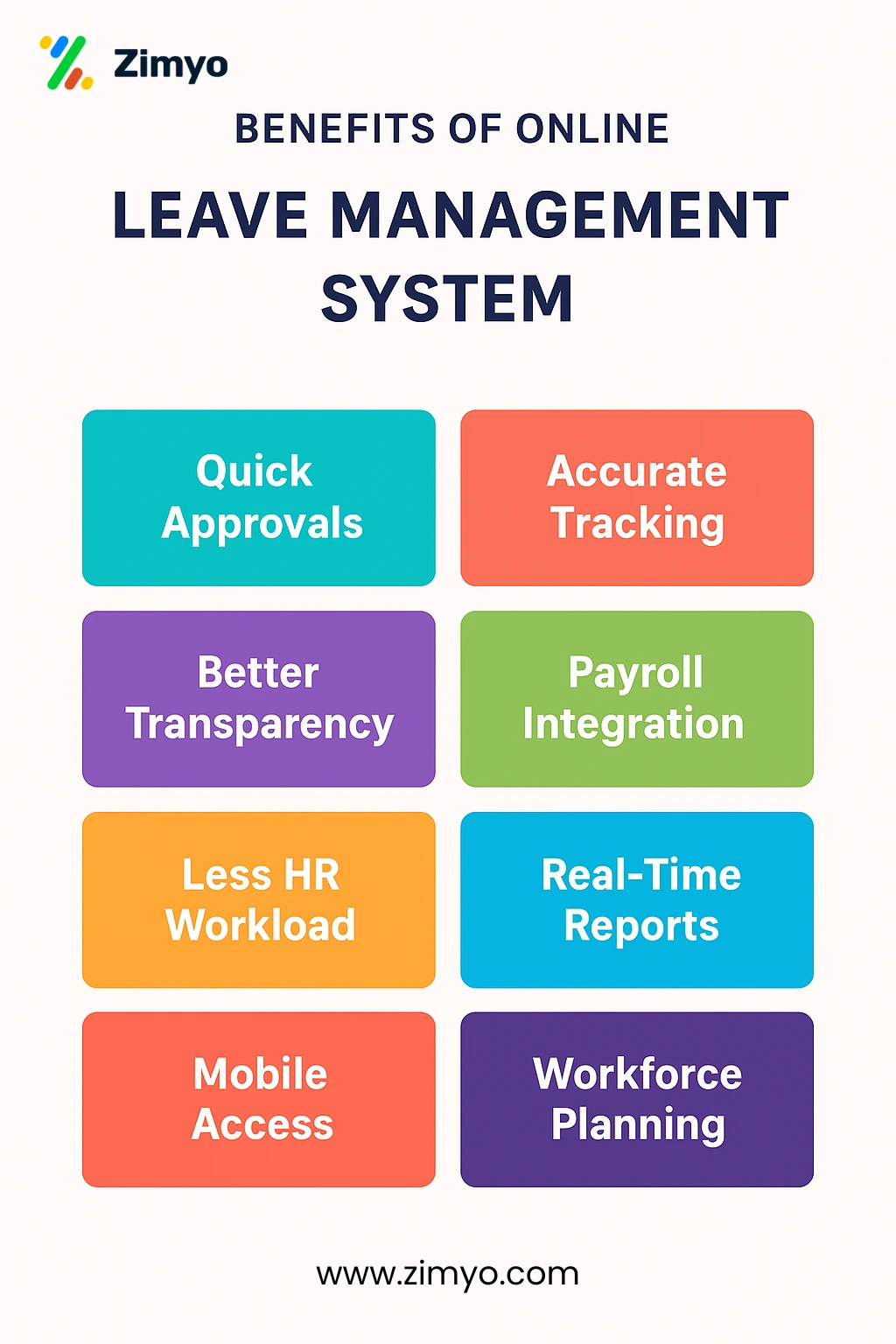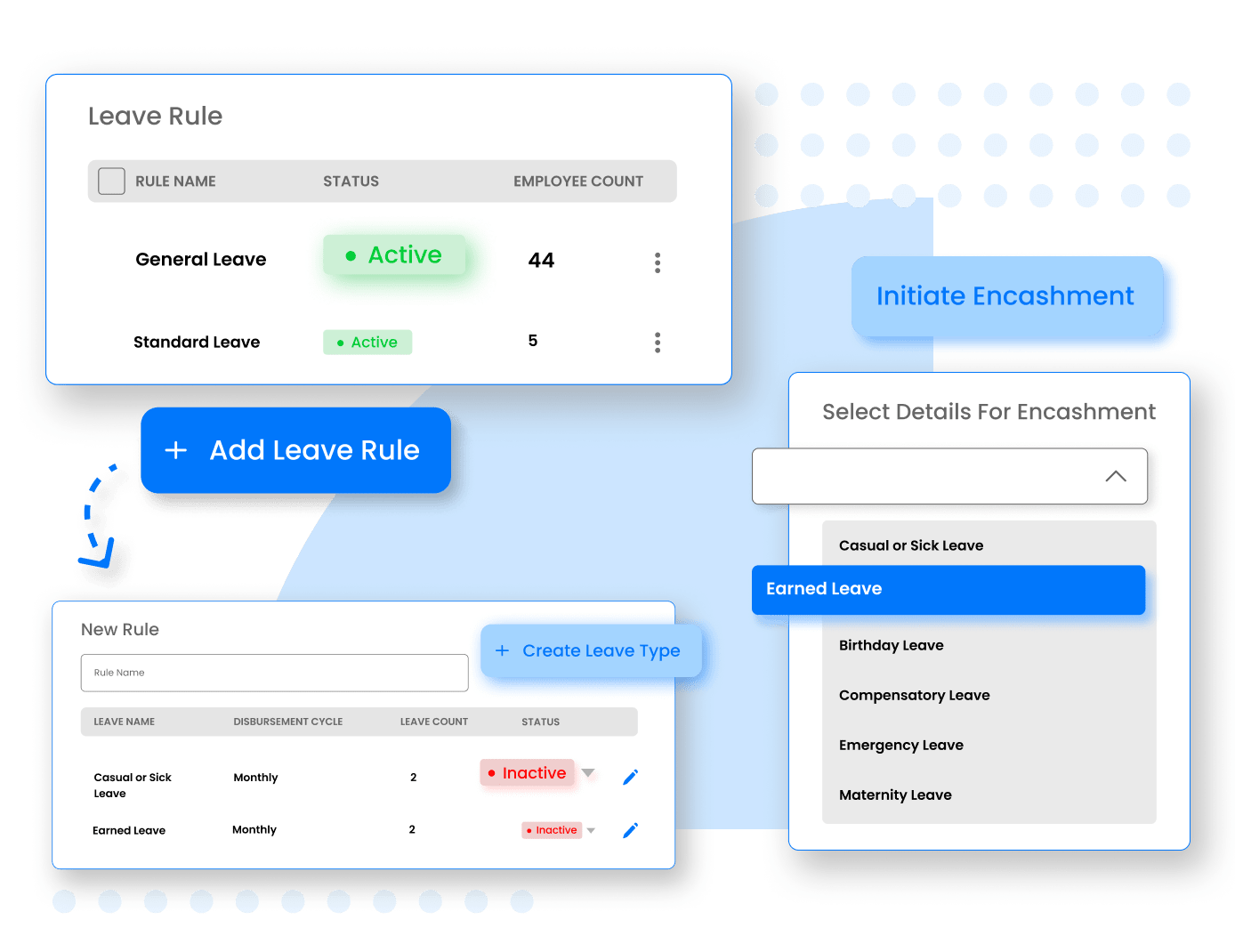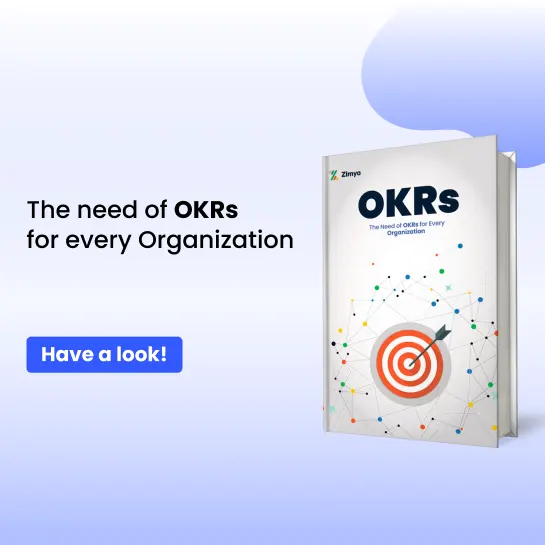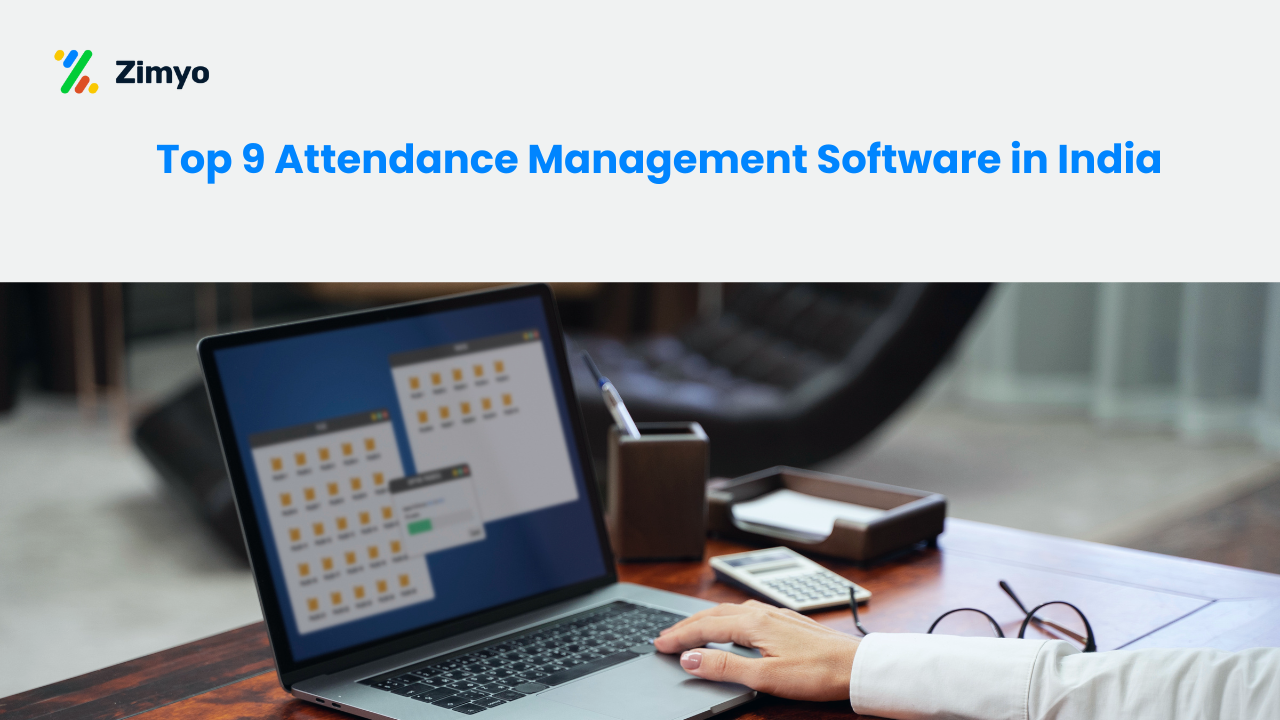Managing leaves may sound simple, but in reality, it is one of the most complicated parts of HR operations. From employee absence requests to payroll calculations, everything must be accurate. If leave records are wrong, it leads to payroll errors, unhappy employees, and even compliance issues. That is why more and more companies are shifting to an online Leave Management System instead of old paper forms or Excel sheets.
In this blog, we will explore the Top Benefits of Online Leave Management System, who can benefit from it, and why switching from manual methods is the smartest decision.
Introduction to Leave Management System
Leave Management System Meaning in Layman Terms
A Leave Management System is simply a tool that helps companies track and manage employee time off. Think of it as a digital diary that records every leave request, approval, and balance automatically. No paperwork, no confusion, and no mistakes.
Official Definition of Leave Management System
A Leave Management System is a software solution designed to automate the process of handling employee leave requests, approvals, tracking, accruals, and compliance. It is also known as leave management software, time off tracking software, or an employee leave management system.
Top Benefits of Online Leave Management System
There are numerous benefits of opting for a Leave Management Software. As an HR Manager, Team Leader or even CEO, you must know all these benefits and land onto a decision of choosing a leave tracking software for your company. Here we have jotted down all the prominent benefits for you:

Now that your have got an overview of what all benefits we are talking about, let’s jump onto each one of them separately and understand how are they important in smooth leave tracking process.
1. Organized Leave Requests and Approvals
An online leave management system eliminates the inefficiencies of paper forms, emails, or Excel sheets. Employees can submit leave requests in seconds, and managers receive instant notifications to approve or reject with just one click. This makes the process smooth, transparent, and stress-free for both sides. When leave approvals are delayed in manual systems, employees often feel frustrated, while managers face difficulty in workforce planning. A digital leave management app fixes this by ensuring requests never get lost in emails or overlooked during busy periods.
- For example, SHRM (Society for Human Resource Management) reports that organizations that digitized leave approvals reduced HR response time by over 45%.
- Deloitte’s research also shows that digital workflows improve employee satisfaction by nearly 30%, as employees feel more in control of their time off.
- Companies like Google and Microsoft rely on self service leave portals for this reason, it frees HR from repetitive tasks and builds employee trust in the system.
2. Accurate PTO & Absence Tracking
A leave tracking software ensures that employees always have updated records of their Paid Time Off (PTO). In manual systems, errors in accruals are common, leading to disputes between HR and employees. When balances are miscalculated, it directly impacts payroll, causing mistrust. With an automated LMS leave management system, PTO balances update instantly after each approved or rejected request. Employees no longer need to chase HR for information.
- According to a Kronos study, companies that implemented digital PTO tracking reduced payroll errors by up to 37%.
- For instance, Amazon introduced automated absence tracking for its large workforce, which helped managers maintain accurate schedules across thousands of employees. The result was not just better accuracy but also fewer payroll corrections. Thus, saving both time and money. Accurate PTO tracking builds accountability and eliminates unnecessary disputes.
3. Compliance with Labor Laws
In the U.S., compliance with labor laws like the Family and Medical Leave Act (FMLA) is mandatory. A leave management app automates compliance by applying legal rules to each leave request. This prevents costly penalties for employers and ensures employees receive the leave benefits they are entitled to. Manually tracking FMLA leave is risky because HR must calculate eligibility, duration, and protected absences accurately, something a system does effortlessly.
- The U.S. Department of Labor found that nearly 60% of HR managers struggle with FMLA compliance due to manual processes. Automating this with leave management software drastically reduces the chance of errors.
- For example, Walmart adopted digital leave tracking for its vast workforce to ensure compliance across states with different labor laws. As a result, they reduced compliance-related disputes significantly. This shows that automation is not just about convenience but also about staying legally secure.
4. Improved Transparency & Employee Satisfaction
One of the biggest frustrations for employees is not knowing how much leave they have left or whether their requests are being treated fairly. A leave management system solves this problem by providing a transparent view of leave balances, pending requests, and approval histories. Managers can also see who else is on leave before making decisions, which prevents scheduling conflicts. This transparency builds fairness and trust across the workplace.
- According to a Gallup Workplace Report, employees who perceive workplace processes as transparent are 2.5 times more likely to be engaged and satisfied in their roles.
- A practical example is IBM, which implemented a global leave management software to give employees visibility of their time-off records. This not only boosted employee morale but also reduced conflicts between managers and teams over leave approvals. Transparency leads to a happier and more productive workforce.
5. Integration with Payroll & HR Systems
A modern employee leave management system is not just about tracking absences, it integrates seamlessly with payroll and HR systems. This ensures that payroll is always accurate because leave deductions, unpaid time off, and benefits are automatically updated. Without integration, HR teams often have to enter data manually into multiple systems, which increases the risk of errors and delays.
- According to PwC’s HR Tech Survey, businesses that integrated their leave management software with payroll reduced payroll processing time by 40% and errors by 35%.
- For example, Accenture uses an integrated leave payroll solution that connects attendance, payroll, and HR modules. This integration ensures employees are always paid correctly, eliminates disputes, and saves HR hours of manual work.
Effortlessly Streamline Leave Management, Time Tracking, and Attendance Monitoring with Zimyo Leave Tracking Software.
6. Real-Time Data and Leave Reports
Another top benefit of an online leave management system is the availability of real-time data. Managers can instantly access leave reports, track absenteeism patterns, and make data-driven decisions. HR can also analyze which departments have the highest absence rates, helping them identify potential workforce challenges early. This level of insight is impossible with manual systems.
- Gartner research shows that companies using HR analytics tools, including leave reporting, improved workforce planning efficiency by 23%.
- For example, Netflix utilizes real-time leave reporting to understand employee work-life balance and optimize team productivity. With instant data, decision-making becomes faster, more accurate, and more strategic.
7. Reduced Administrative Workload for HR
Manual leave tracking creates a heavy burden for HR teams. They spend countless hours collecting leave forms, responding to employee queries, and correcting payroll mistakes. An LMS leave management system automates all of these repetitive tasks. Employees apply for leave themselves, the system calculates balances automatically, and payroll gets updated without HR intervention.
- A SHRM study found that HR professionals spend nearly 20% of their time on administrative tasks like leave tracking. By automating these tasks, companies free up HR to focus on more strategic initiatives such as talent development and employee engagement.
- For instance, according to McKinsey Report, Coca-Cola implemented digital leave tracking across multiple regions, which reduced HR’s administrative workload and improved efficiency.
I was able to implement the platform on my own. It helps in assigning the tasks to other employees, conducting surveys and polls, and much more. The ease of use and self-onboarding is something that I would like to appreciate.
Sonali, Kommunicate
Zimyo simplifies attendance management for our organization. The leave and attendance are so streamlined that we have never faced any difficulties with the system.
Anurag, Eggoz Nutrition
8. Enhanced Remote & Mobile Accessibility
In today’s remote and hybrid work culture, employees expect to manage everything from their smartphones. Modern leave management software comes with mobile apps that allow employees to apply for leave from anywhere and managers to approve requests instantly. This is especially important for industries with field staff or distributed teams.
- According to Statista, more than 70% of U.S. employees prefer mobile-first HR solutions.
- Companies like Uber rely on a leave management app to manage time-off requests from drivers across different regions. This flexibility ensures that no matter where employees are, they remain connected and empowered to manage their leaves effectively.
9. Better Workforce Planning and Productivity
When managers have visibility into all leave data, they can plan better. They know in advance who is going to be absent and can adjust shifts or projects accordingly. This prevents unexpected staff shortages and ensures smooth operations. A transparent employee leave management system helps managers balance workloads and avoid burnout among team members.
- According to a Deloitte Workforce Report, companies that adopted leave management systems improved workforce productivity by 22% due to better resource allocation.
- For example, Starbucks uses advanced scheduling and leave tracking software to manage thousands of employees across its outlets. This ensures they always have enough staff during peak hours and prevents service disruptions. Proper planning leads to higher efficiency and better customer satisfaction.
Find out the Top 9 Leave Management System in India and choose the best suited for your organization.
Who can Benefit the Most?
Small Businesses vs. Large Enterprises
Small businesses save time and reduce mistakes with an online leave management app, while large enterprises benefit from automation, compliance, and detailed reporting.
Industry-Specific Examples (IT, Healthcare, Retail, etc.)
- IT Companies: Remote teams can apply for leave from anywhere.
- Healthcare: Shift planning becomes easy when absences are tracked in real time.
- Retail: Managers can quickly see who is available during peak sales seasons.
Key Features to Look for in a Leave Management System
Following are the necessary features that you must look for in a Leave Management System:
- Cloud-based access – Work from anywhere with real-time updates.
- Employee self service portal – Employees manage their own leave requests and balances.
- Automated leave policies & accruals – The system applies company rules automatically.
- Mobile app support – Apply, approve, and track leave using a smartphone.
Challenges of Manual Leave Tracking (Why You Should Switch)
Although, there are numerous challenges of manual leave tracking. Yet, the following are the most common ones which hinder the smooth flow of the leave management process:
- Errors, delays, and lack of transparency – Manual records often create confusion, miscommunication, and incorrect balances.
- Negative impact on payroll and compliance – A wrong leave entry can lead to payroll errors and non-compliance with labor laws.
Conclusion
Quick Recap of the Benefits
The Top Benefits of Online Leave Management System include faster approvals, accurate time off tracking, compliance, transparency, payroll accuracy, and better workforce planning. It makes work easier for HR, managers, and employees alike.
Adopt Zimyo Online Leave Management System

If your business still relies on spreadsheets or manual records, it is time to switch. With Zimyo Leave Management System, you get a powerful leave tracking software that integrates smoothly with payroll, supports mobile apps, and ensures complete transparency. Start using Zimyo employee leave management system today and experience stress-free leave tracking.
Frequently Asked Questions (FAQs)
What is a Leave Management System?
A Leave Management System (LMS) is a software solution that helps organizations manage employee time off in an organized way. It handles everything from leave requests and approvals to tracking balances, ensuring compliance with labor laws, and integrating with payroll. In short, it automates the entire leave process and reduces errors.
How to Track Employee Leaves?
You can track employee leaves in multiple ways:
- Manual tracking – using paper forms, registers, or Excel sheets (but this often leads to errors).
- Leave tracking software – the smarter way, where employees apply for leave online and the system automatically updates balances, generates reports, and integrates with payroll.
- Mobile leave management apps – allow employees and managers to handle leave requests anytime, anywhere.
Most modern companies use time off tracking software or an employee leave management system because it saves time, ensures accuracy, and improves transparency.
What is LMS Leave?
“LMS Leave” refers to leave that is managed through a Leave Management System (LMS). It means an employee’s leave request, approval, balance calculation, and payroll adjustments are all handled within the LMS software instead of being managed manually.








